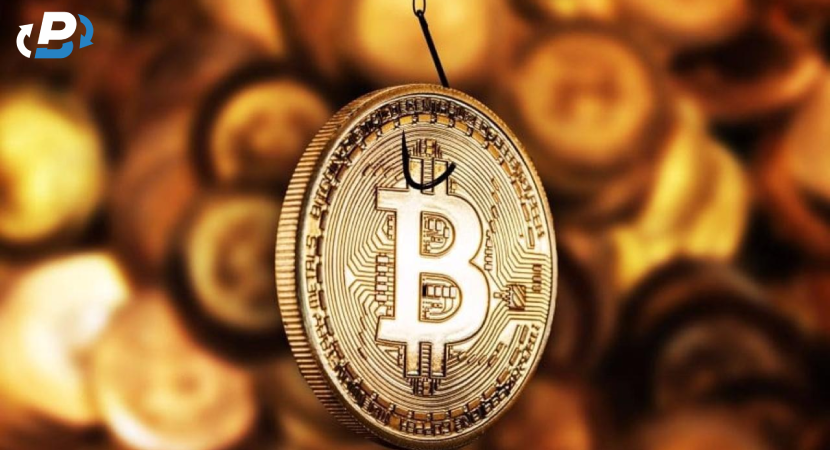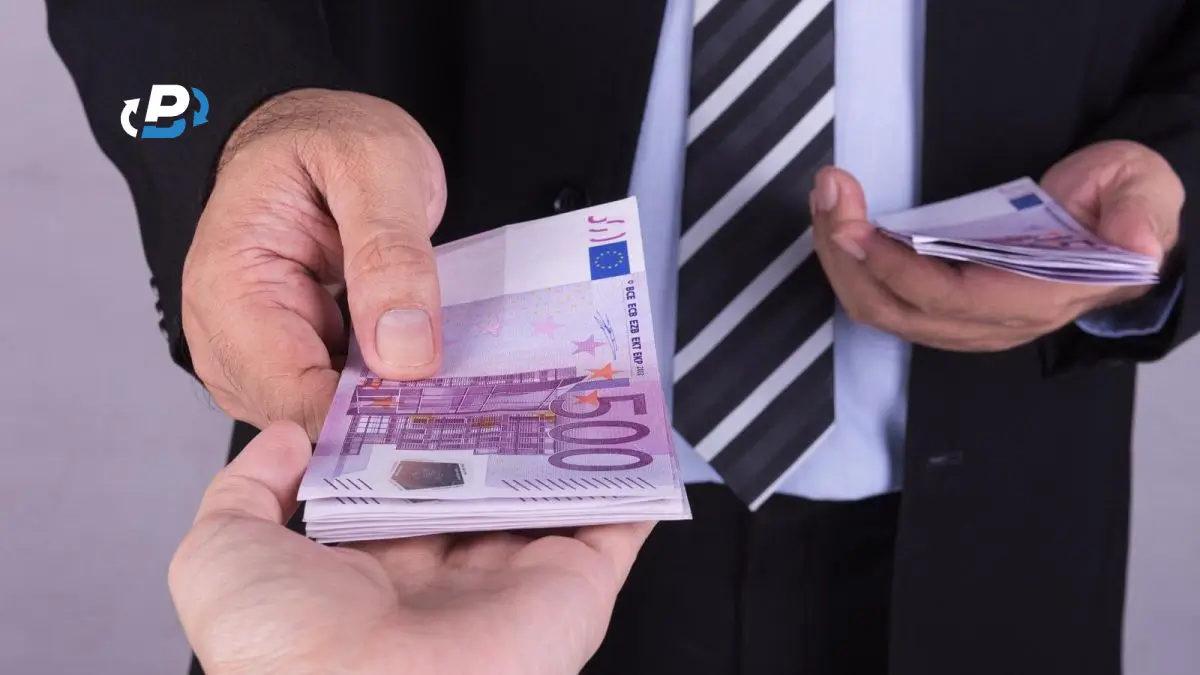Although investments in cryptocurrencies can be very profitable, as demonstrated by the past few years' performance, they can also be scam projects and cause you to lose money. It is essential to avoid losing money on fake or scam projects because recovering a loss is much harder than making a profit.
So, how do you spot a crypto scam? You need to analyze the project's possible red flags, such as an anonymous or inexperienced team, unrealistic goals, exaggerated and pumped-up hype and FOMO, no use case that generates real value, poor technology, and exaggerated earnings promises.
These are just some possible red flags that should alarm you about a project that could prove to be a scam. At PlasBit, we are committed to combating all types of scams and frauds in the crypto world, so we never promote crypto projects, we do not propose investments or raise money, we are completely self-funded and independent of third parties, and we are dedicated to extensive research and analysis to educate clients about possible crypto scams. It makes our analysis unbiased and objective, allowing you to make knowledgeable and informed decisions. We strongly believe that the future of finance lies in the democratization and inclusiveness of blockchain-based technology. This approach has the potential to restore financial freedom to users while ensuring the utmost respect for individual human rights, privacy, and security. Our mission is to achieve this goal with uncompromising integrity. PlasBit will do all it can to protect users from scams. If we suspect that a customer has been scammed, we will make a video call with him, and if our concerns are correct, we will not allow him to make transactions, thus saving the customer from being scammed using our service.. Unfortunately, recovering stolen funds is not possible, but your input can be helpful in identifying the scammers and preventing further fraud. To avoid being a victim of a crypto scam, you must recognize these clear red flags, which we will analyze in detail to immediately identify whether a crypto project is fake or a scam to prevent possible fraud and loss of funds. Always apply sound personal research (DYOR - do your own research) and evaluate the results with the right critical analysis approach.
Most Commons Red Flags of a Crypto Scam
So, to recognize a crypto scam, you will first need to do a thorough fundamental analysis and identify whether there are any possible red flags. The most common ones are:
1. Unrealistic Promises of High Returns
The first serious red flag present in most crypto scam projects is offering unrealistic and exaggerated ROI (return on investment) prospects. In fact, by making a potential investor imagine substantial gains in the short term, they manipulate users' perceptions leading them to invest heavily, and quickly. This is absolutely incorrect, as it is implausible to promise exaggerated ROI in the short term, especially since a good investment has an average return of 10% per year.
2. Lack of Transparency
Another common red flag of crypto scams is the lack of transparency on the part of the team. Often, fraudulent projects do not respond to users' "uncomfortable questions," muting or banning them from the community or simply ignoring them. While doing free fud is not the best thing to do, asking legitimate questions to the team is more than fair, especially considering that the project is literally enticing you to spend your money with them. If there is a totalitarian regime in the community and social channels that do not allow questions and confrontation, then this is a serious red flag that the project could potentially be a scam.
3. Pressure to Act Quickly
As mentioned earlier, scammers instill in you a sense of urgency to invest right away through unrealistic promises of earnings and advanced and manipulative marketing strategies. Through well-thought-out communication, in fact, they trigger psychological and neurological mechanisms in you that force you to act impulsively instead of rationally. So, instead of calmly analyzing the project analytically, they push you to invest irrationally and hastily, causing you to fall into their trap.
4. Lack of Regulatory Compliance
In most cases, crypto scam projects are not properly regulated or are located in tax and legal havens. In fact, by analyzing the documents on the site, such as the terms and conditions, privacy policy, company location, and other data, you can easily verify that the project does not have all the permissions in place to operate. Also, some nations have specific jurisdictions to regulate, and you cannot invest in any project if you reside in some specific states.
5. Complex or Confusing Structure
Many projects, in order not to make people realize their unreliability and the weakness of their plans, make the information much more complex and articulate than it is. This means that they may voluntarily use complicated and technical language in the whitepaper so as to make users believe that the project is well structured, even in the technical details, which are incomprehensible to most. On the contrary, the project has been 'voluntarily complicated' to make it less understandable and make it more difficult to understand that it is a scam. On the contrary, the best projects can be explained and understood in a few sentences because they solve a concrete problem. For example, if the token economy is too complicated to understand, it is probably too complicated to implement.
6. Lack of Community Trust
If the project is based on cryptocurrencies and Web3, the community is an indispensable element that cannot be missing. Reflecting the potential of blockchain, such as transparency, decentralization, and the democratization of finance, crypto communities are likewise emblematic of Web3. If the community is not present, or 'dead', or pessimistic and critical, then this means that the team has not created a productive, inclusive, and constructive atmosphere. Either the team has failed to develop what it promised, or communication with the community has not been transparent enough. Critically evaluating feedback from other community members can help you understand how the team relates to investors and whether the project is reliable.
7. Anonymous or Nonexistent Team
Following the reasoning of the previous points, this red flag is the main one to consider: Is the team anonymous? If it is, well, then I have bad news for you. The team would have no reason to be anonymous if a project is ambitious and intends to build something solid long-term. Conversely, if the project intends to make a rug pull or scam users in some way, then it is very plausible for the team to be anonymous so that they do not take the blame themselves after the scam. Be wary of any project that does not have a visible team on the site, and consider that any great goal needs a transparent and solid team to be achieved.
8. Lack of Clear Use Case or Utility
If a project is promising in the long term, it is because it has a clear use case that generates value in the real world. If no use case brings funds into the project, it has no intrinsic value. So, you can well understand that the project must have a use case that aims to solve a real problem. Otherwise, its value is zero, and the price will tend to go towards zero. This is also the case with most NFTs, which are turning out to be worthless NFTs. This is because they do not have a concrete use case that solves a problem, but their value is, in most cases, driven only by hype and temporary FOMO.
9. Unsolicited Investment Opportunities
A good project with good potential does not need to press users to buy it. If it is a good project, marketing will take care of itself through word of mouth and positive community reviews. Of course, this does not mean that a good initial marketing push is not needed, but it does mean that an obsessive push by the marketing team towards users can mean that there is a lack of a solid product base and that more is invested in marketing than in development and innovation. Beware of anyone who insistently proposes investments because it can be a clear red flag of a scam project.
10. Poorly Designed or Cloned Websites
Very often, as with fake exchanges, crypto scam projects also create fake sites by cloning other legitimate sites. If they do not clone them, then it is also plausible that the sites are sloppily created with clear graphical or compliance errors. Thoroughly analyze the website and check that it has not been duplicated using the basis of another site, and check that its design is satisfactory and well executed. If the site is copied or poorly designed, then it is plausibly a scam site; beware!

How do you Spot a Crypto Scams? Practical Tips
Now that we understand the most common red flags for a crypto scam project, we would like to provide you with some hints and practical tips to avoid falling into a scam trap.
Conduct Thorough Research
Underlying any successful investment is careful and thorough research involving fundamental and technical analysis. Fundamental analysis will help you understand whether the project has a solid foundation to structure its growth and success. Technical analysis, on the other hand, will allow you to understand whether the price reflects its real value or whether the project is over- or under-valued, allowing you to understand whether it is the right time to invest in a project or not.
Verify Team Credential
The second indispensable tip for any investor is to analyze the team behind it. If the team is visible, transparent, and has considerable experience and past successes, this can be a clear green flag. Conversely, if the team is anonymous, has no experience in tech or finance, and has unclear and transparent communication, then be wary of it because these are clearly serious red flags.
Assess Project Utility
As also mentioned above, a project has utility and value if it solves a real problem. If the problem the project aims to solve is useless, or there is not enough demand for it, then the project has insufficient utility. Similarly, if the project has no mission to solve a problem at all, it has no use case, and its intrinsic value is zero. Consequently, the price of the token or cryptocurrency will also tend towards zero in the long run.
Scrutinize Community Engagement and Feedback
If others have invested before you, it is worth hearing their feedback to understand what the project has already developed before you. Although the opinions of previous investors may be biased, you will certainly also find objective reviews describing problems, if any. Before investing, assess the size, involvement, and attitude of the community. This is often a reflection of the health of the project.
A Brief Overview of the Most Common Crypto Scams
Unfortunately, educating users about the most common crypto scams is never enough. There is a continuous need to unveil and explain the most common scams and, at PlasBit, we have analyzed in detail numerous types of common crypto scams. We hope that our efforts will be helpful for users to be prepared and recognize a crypto scam so as to prevent fraud.
Crypto Dust Attacks
In this type of manipulative scam, scammers, through analysis tools and scripts, analyze transactions on the blockchain, looking for addresses that make large crypto movements with certain wallets repeatedly. The scammers exploit the intuition that if these unsuspecting victims always transfer money with the same address, it is plausible that they copy it from their own transaction history. So they send small amounts of cryptocurrency to these wallets, placing themselves at the top of the transaction history, with a wallet generated in such a way that the characters are as similar as possible to the wallet with which the victim used to interact. In conclusion, in crypto dust attacks, the victim, by copying and pasting the scammer's address, unknowingly sends money to the attackers.
Crypto Romance Scams
In this fraud, scammers pretend to be online girls and try to hook poor victims on dating sites or online communities. After they start chatting, the scammers become familiar with the victim, and an intimate, habitual relationship begins to be established, in which they become intimate. The victim, becoming attached to the scammer, begins to trust and often even falls in love. After gaining the victim's trust, the scammer begins to introduce investments in cryptocurrencies, with which he claims to be able to make a living. So, often, the victim falls into the trap and starts sending money to the scammer to get them to invest in cryptocurrencies. Once the scammers have gotten the victim to send as much money as possible, he disappears into thin air, breaking his heart and leaving him penniless. Very often, sadly, these scams are carried out by people kidnapped and tortured in real prison towns, where criminal organizations force thousands of people to perpetuate online scams, as in the case of KK Park.
Crypto Giveaway Scams
These sneaky scams are actually very simple and easy to recognize, but nevertheless, they continue to claim victims online. As studied in research regarding Brad Garlinghouse's fake videos about the XRP giveaway, scammers use fake videos generated by artificial intelligence to impersonate influential figures in the crypto world and convince users to send money to their wallets. In the case analyzed, the scammers promised that anyone who sent money to a particular address would receive twice as much in rewards. Unfortunately, this worked; beware of crypto giveaway scams; if something is too good to be true, it probably is.
Pump and Dump Schemes
In this scam, the team creates great expectations, hype, and FOMO (fear of missing out) for the launch of a particular token. Through advanced manipulative marketing strategies, scammers convince users to invest in a scheme quickly in order to have a significant return in the short term. Everything is designed to reach a moment of maximum hype within minutes of launching the token. At this moment, the team's real intentions come out: After collecting money from investors by selling tokens, they sell all their tokens by crashing the market and profiting from all the victims who trusted them. Then, after a brief pump, the dump immediately arrives, revealing the evil plan. As demonstrated in the Squid Game pump and dump, one must avoid projects with lots of hype, no use case, and an anonymous team.
Normal and Slow Rug Pull Scams
In classic rug pulls, project teams disappear shortly after the token is sold. Unlike pump and dump, this does not happen instantly but generally after a short time. Once the scammers have obtained as much funding as possible from investors, they disappear into thin air. Even more diabolical are slow rug pulls, where the team continues to be present for months or years, slowly causing investors to lose focus and leaving the project open just to "maintain the facade." In reality, development will never move forward, and the project is left to its own devices: The team is already working on the next scam.
Crypto Recovery Scams
What would you do after you were scammed? You'd go to Google and look up how you can get your money back, or you'd probably make a post on Twitter. The last thing you would expect is that someone, instead of helping you, would try to scam you again, right? Well, that is exactly what happens in this type of scam. The scammers, after they offer to recover your stolen money (which is almost impossible on the blockchain), charge you a fee in order to recover the money that was stolen from you. Once you pay them to recover your money, they also disappear into thin air, scamming you a second time. Be careful because the crypto recovery scam is surely the most diabolical and frustrating scam.
How Do you Spot a Crypto Scam? Key Takeaways
Now that we have looked at the most common red flags of a crypto scam, provided practical tips for safeguarding yourself, and given a brief overview of the most common types of crypto scams, it is good to give a summary of what we need to remember for recognize a crypto scam.
1. If Something is Too Good to Be True, It Probably is.
Be wary of those who promise you great ROI (return on investment) in a short time because nothing is as easy as it seems. Consider that any financial advice you receive can be biased and unbiased. If, for example, a person who bought at $1 a given cryptocurrency advises you to buy it too when the price is $30, it is plausible that when you buy, he sells on your back.
2. Stolen Cryptocurrencies Cannot be Recovered (99.9% of the time).
It is sad to admit, but the inherent immutability of the blockchain does not allow transactions to be reversible. So, complete financial freedom comes at a certain cost: Education and individual responsibility. It is your responsibility to inform and educate yourself about the security of your wallet and cryptocurrencies. You cannot blame anyone if you are a victim of scams, unfortunately. You cannot recover stolen crypto, the only possible way to stay safe is to be preventative and informed.
3. Recovering a Loss is much Harder than Making a Profit.
What it means is that if you lose 50% of your portfolio in a crypto scam, to get back to the initial figure, you won't just get +50%; you'll have to get +100%. In general, consider that not losing money matters much more than making it in the short term, and that compound interest is your best friend in investing. Don't seek risky investments in the short term, but keep a strategic and rational long-term view.
4. DYOR: Do Your Own Research.
Don't take financial advice lightly, but do your own research. This means that before you invest in any project, you should spend time doing fundamental and technical analysis, both to understand whether a project has long-term potential and whether this is the right time to buy it. Although time-consuming, doing this kind of analysis and consideration will enable you to make wiser and more thoughtful decisions, allowing you to benefit in the long run and have peace of mind.
5. The Responsibility is Yours
Security in Web3 is everything. Decentralization and democratization of the financial system are underway, and in this Wild West, the responsibility for asset management is yours alone. Before you invest, especially if substantial sums, spend time learning about blockchain technology and the security of your wallet and assets. To trade, use only reputable exchanges with verified security measures and proof of reserves, and move your long-term holdings to cold wallets.
Beware of Crypto Scams
How do you spot a crypto scam? Armed with this information, we're sure you'll be able to figure out whether or not your next project is a scam. Remember to always check the possible red flags of a project, and always do a healthy DYOR before investing in any asset. Information is valuable, especially if it enables you to prevent fraud, and at PlasBit, we hope you have enjoyed this research. In a time where privacy and security are undervalued and ignored, unlike most crypto platforms, we fight to give users back their financial freedom. Our values require us to act with the utmost respect for human rights, and we will do whatever it takes to keep your data private and away from prying eyes. Because we are self-financed and independent of third parties, we have the freedom to act according to our moral values and are not accountable to any government or financial institution. We do not want to scale to reach billions of users, rather we want to build a healthy community where members are respected and that is based on healthy and fair values.

 EN
EN









